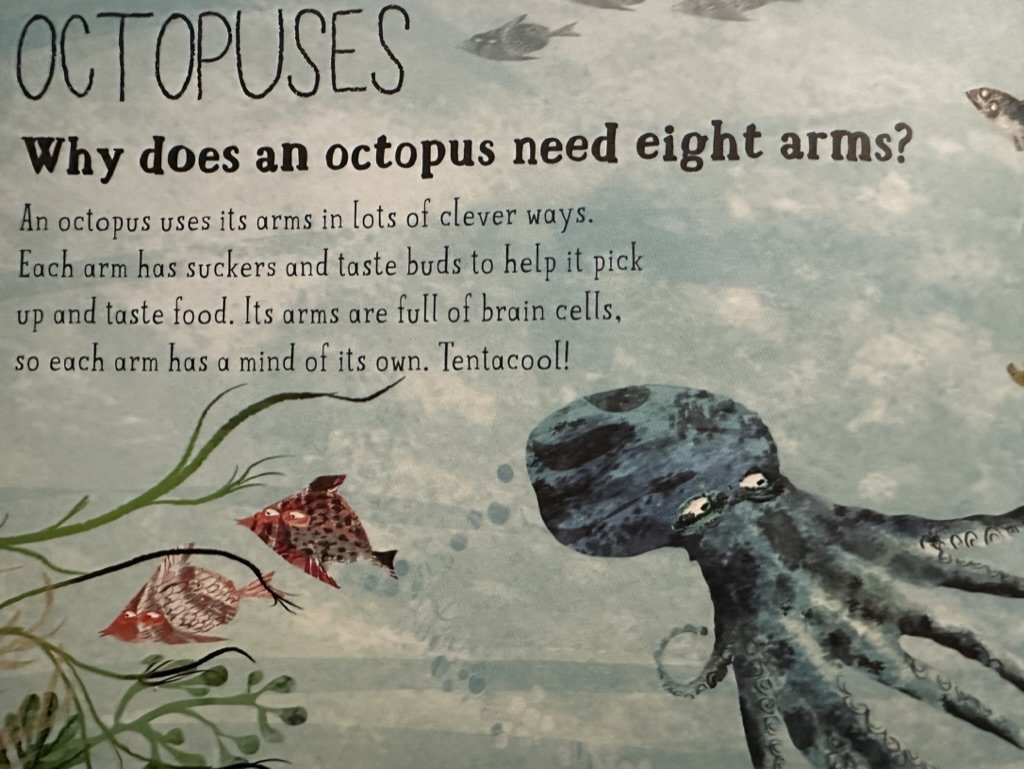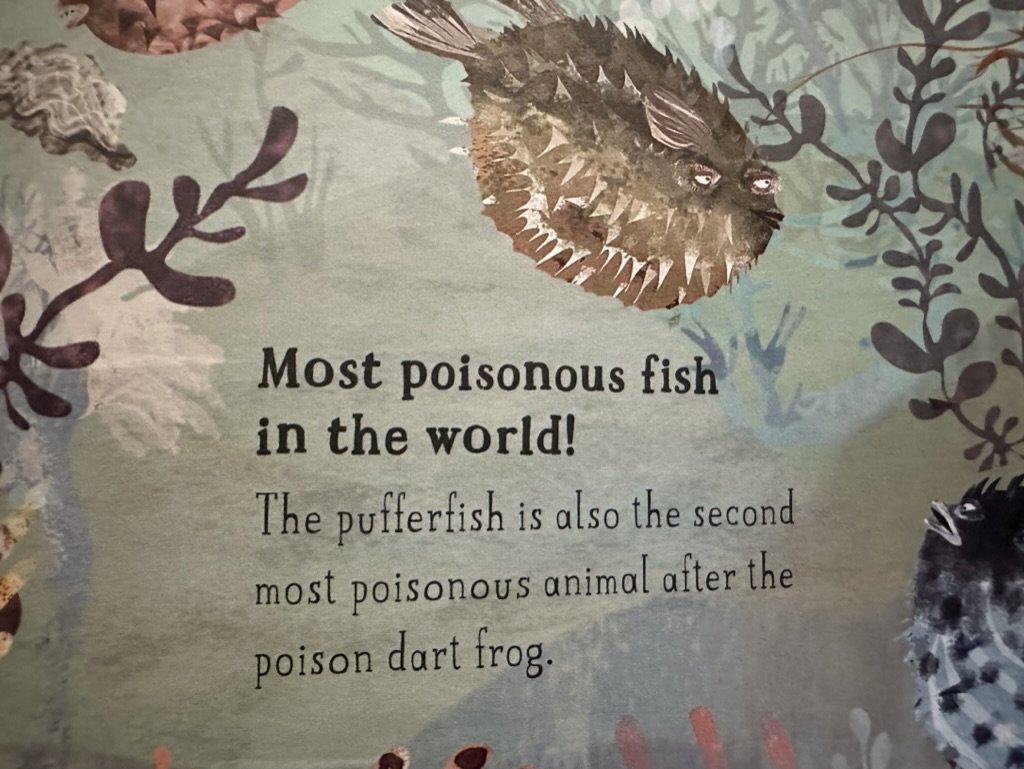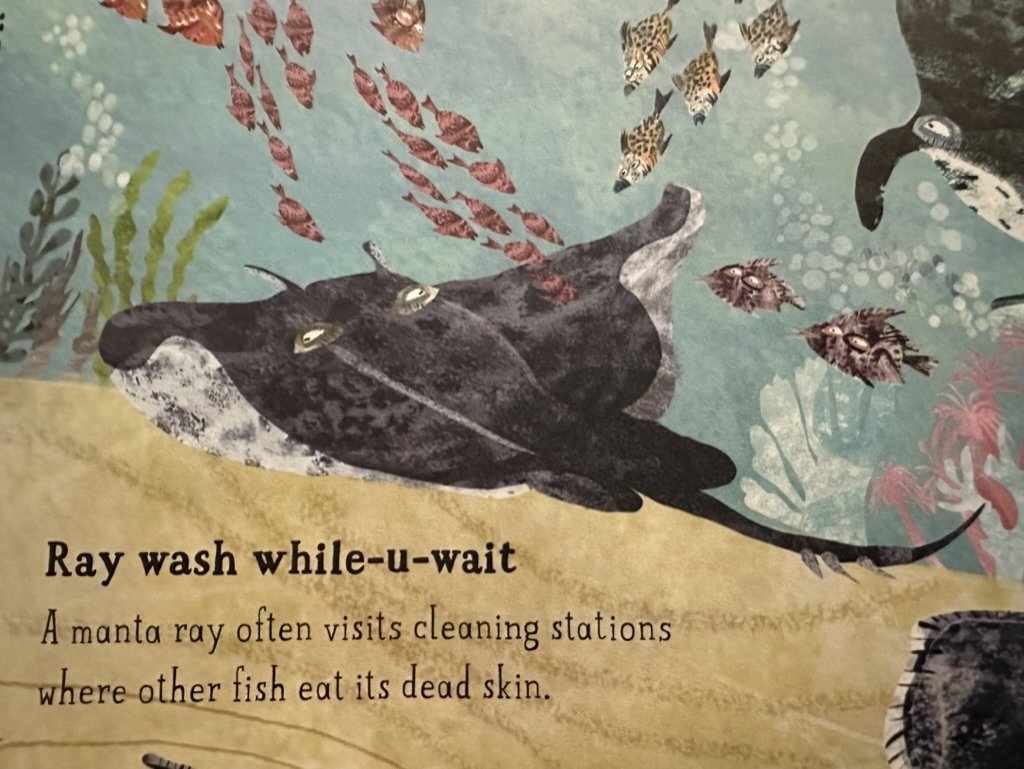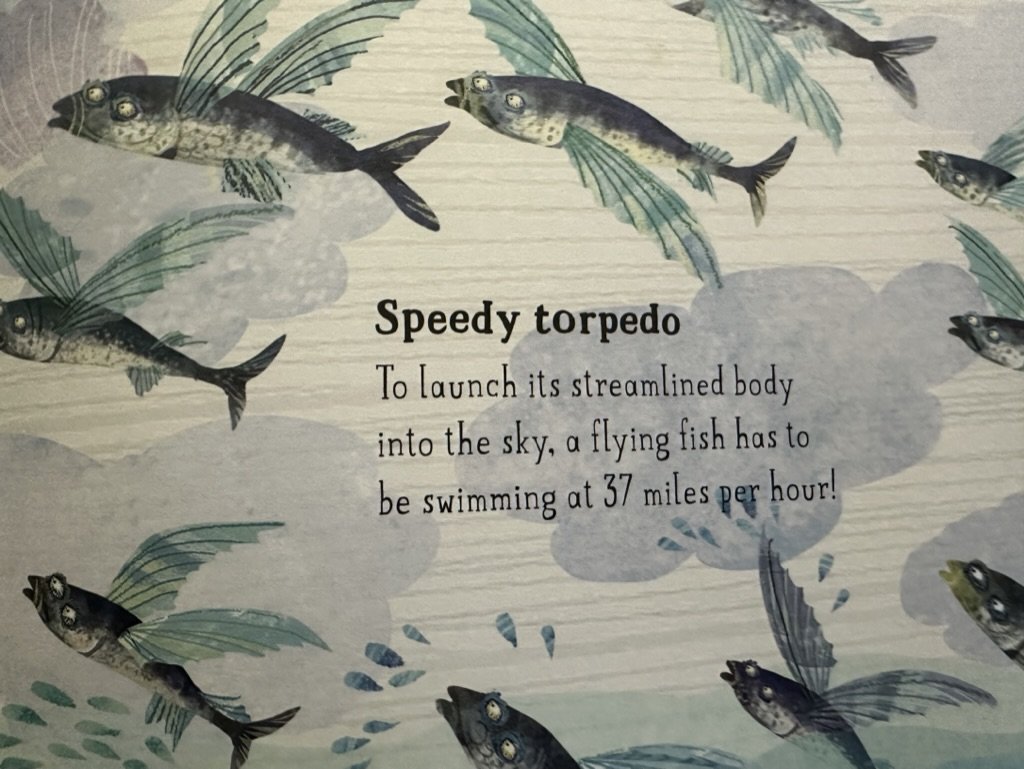Awesome Inspiration—Earth Day 2024
My two young grandsons—three and six years old—are enthralled by animals. Their enthusiasm is infectious, and now my interest in the innumerable fascinating creatures that share our planet matches theirs. No matter how many hours we spend reading together, we can’t make a dent in all there is to learn. In fact, no one knows how many species exist on earth. Estimates range from 3 million to over 100 million, and every species experiences life in a unique way. In honor of Earth Day this coming Monday, April 22, I want to share a few of our recent discoveries.
One of our favorite books is the beautifully illustrated The Big Book of Blue, packed with fascinating information about animals that live in the ocean: fish, mollusks, crustaceans, reptiles, and mammals. If anyone is around while we’re reading, my grandsons are always eager to share their astounding discoveries. “Mommy!” one hollers across the room, “Did you know that sea turtles’ eggs are soft and bouncy like rubber so that they won’t break when they hit the sand?” “Grandpa!” his brother calls out, “Did you know that sea turtles’ eyelids are see-through-like goggles to help them see underwater?”
We find octopuses particularly intriguing. Did you know that they have three hearts, and that their eight impressively strong, flexible arms are lined with hundreds of suckers that include cells for neural processing so that each arm has the ability to grasp, feel, taste, and smell its surroundings independently? Another fascinating fact about octopi: these highly intelligent animals move by jet propulsion—they suck water into the back of their head, and then shoot it back out to propel themselves quickly forward as their arms trail behind.
Did you know that pufferfish are the most poisonous fish in the world, and that they puff up to more than double their original size when they’re threatened? They are also the only fish who can blink their eyes—eyes that can look in two different directions at the same time.
My grandkids and I were delighted to discover that manta rays have a symbiotic relationship with smaller fish when it comes to cleanliness. Manta rays are very particular when it comes to hygiene and make regular stops at reef “cleaning stations” run by smaller fish who clean dead skin and parasites off the bodies of visiting animals. According to the Great Barrier Reef Foundation, “Mantas will patiently wait for an entire hour while these cleaners go to work, often returning to the same location time and time again.”
We loved learning that flying fish can glide through the air at speeds of more than 35 miles per hour! They need to swim as fast as 37 miles per hour to gain enough momentum to propel themselves above the water where they can use their winglike pectoral fins to “fly” as far as 650 feet.
Anglerfish also fascinate us. They live deep down in the ocean where it’s very dark and cold. They’ve adapted to survive with low oxygen levels, sparse prey, and the weight of tons of water pressing down on them from above.
Female anglerfish have a light bulb that hangs out of their heads like a fishing pole, serving as a lure. The lure is lit up by bacteria, and when it pulses and moves, it attracts both prey and mates.
Male anglerfish don’t have these lightbulbs. In fact, they are very small (only about one inch long, compared to females that are about two feet long) and they are permanent parasites. According to National Geographic, “When a young, free-swimming male angler encounters a female, he latches onto her with his sharp teeth. Over time, the male physically fuses with the female, connecting to her skin and bloodstream and losing his eyes and all his internal organs except the testes. A female will carry six or more males on her body.”
So far, humans have explored only five percent of our world’s oceans, which means that 95 percent is still unknown. Just imagine all that needs to be discovered and protected! The combination of curiosity, knowledge and awe can serve as a powerful inspiration for conservation.
With all the problems facing our environment, it’s easy to feel overwhelmed, hopeless, and resigned. But love and concern for the vast glory of the earth—which includes our children, grandchildren, and their future offspring—can keep us fiercely committed to becoming more conscientious citizens of our planet.
The infographic below from NOAA (the National Oceanic and Atmospheric Administration) gives us ten ways we can help protect the oceans every day as we lend our voices, votes, time and resources to support a more sustainable future. As Robert Swan said, “The greatest threat to our planet is the belief that someone else will save it.”









